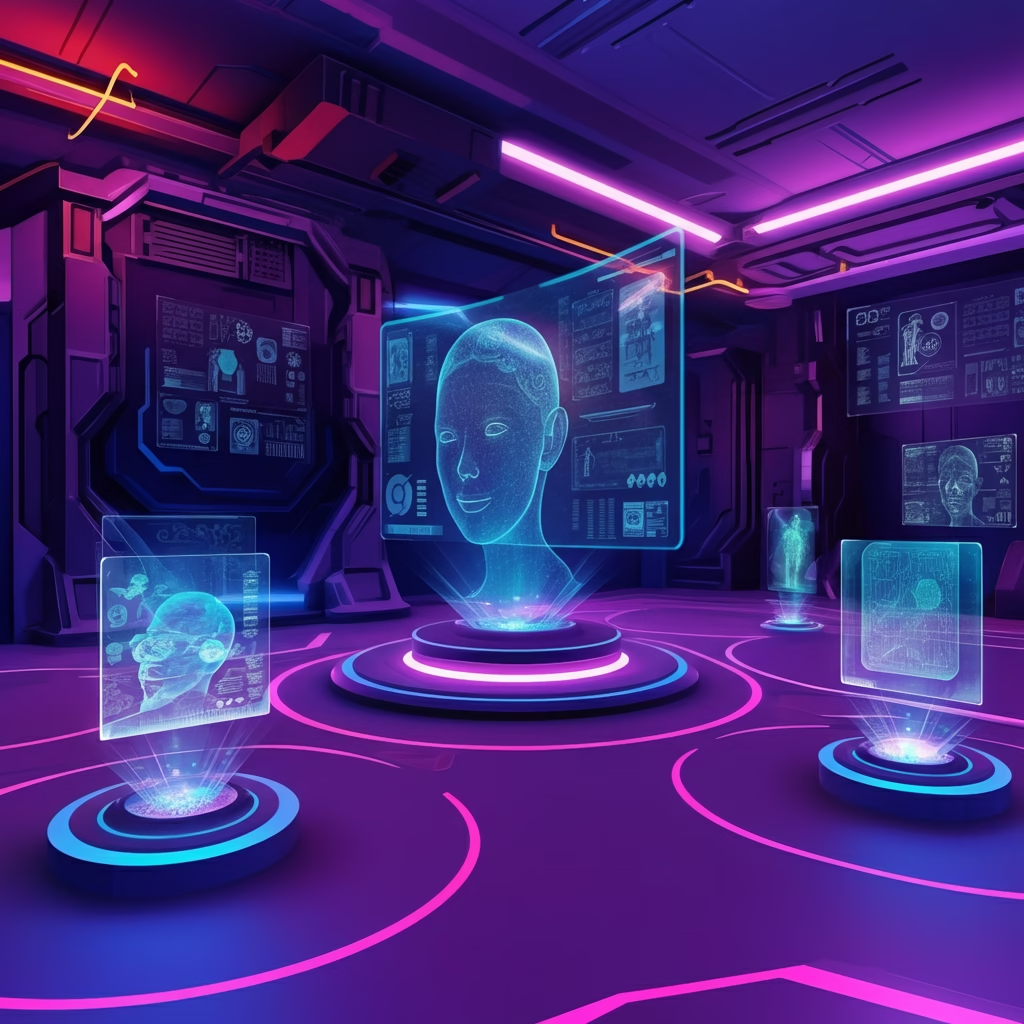In an era where digital boundaries are continuously expanding, a new term has emerged, capturing the imagination of futurists, technologists, and creatives alike—Spaietacle. A fusion of “space,” “spectacle,” and “digital spectacle,” Spaietacle represents the next frontier in immersive digital experiences. It is not merely about virtual or augmented reality; it’s about crafting multisensory, spatially intelligent environments that blend the physical and digital realms into seamless, interactive narratives. As we move further into the 21st century, Spaietacle is set to revolutionize how we interact with technology, entertainment, education, and even one another.
What is Spaietacle?
Spaietacle is best understood as an immersive digital experience that transforms physical or virtual spaces into dynamic, responsive, and participatory environments. It involves the integration of spatial computing, extended reality (XR), artificial intelligence (AI), and sensory technologies to create an enveloping experience that engages users on multiple levels. Whether through holographic projections, wearable tech, interactive displays, or neural feedback systems, the key element of Spaietacle is immersion—total sensory and cognitive engagement.
Table of Contents
ToggleThis concept is not limited to entertainment or gaming; Spaietacle extends to education, therapy, advertising, social networking, architecture, and urban planning. It goes beyond passive observation and invites active participation, turning users into co-creators of the digital experience.
Technological Foundations of Spaietacle
The development of Spaietacle is driven by several converging technologies:
-
Spatial Computing
Spatial computing is the backbone of Spaietacle. It enables machines to understand and interact with the physical world using spatial data. Devices like Apple Vision Pro or Microsoft HoloLens are examples of hardware that leverage spatial computing to create layered experiences. -
Extended Reality (XR)
XR encompasses virtual reality (VR), augmented reality (AR), and mixed reality (MR). Each of these plays a vital role in constructing immersive Spaietacle environments, offering varying levels of user immersion and interaction. -
Artificial Intelligence (AI)
AI brings responsiveness and personalization to Spaietacle experiences. From generating real-time dialogue with virtual characters to predicting user preferences and modifying content dynamically, AI ensures that the experience feels uniquely tailored and lifelike. -
Haptic and Sensory Technology
Touch, sound, and even smell are being explored through wearable tech and ambient installations. These sensory tools help simulate real-world environments, enhancing immersion. -
5G and Edge Computing
High-speed data transmission and reduced latency are crucial for real-time interactive environments. 5G networks and edge computing facilitate seamless, distributed experiences without delays or interruptions.
Applications of Spaietacle in Modern Life
As a trend, Spaietacle is already making waves in multiple industries. Here’s how it’s transforming various sectors:
1. Entertainment and Gaming
The entertainment industry is arguably the first to fully embrace Spaietacle. Immersive concerts, interactive films, and holographic stage performances are redefining how audiences experience art and media. Games are becoming hyperreal, with spatial sound, full-body tracking, and multi-user interaction.
A great example is the rise of location-based entertainment (LBE), such as VR arcades or immersive theater experiences. Imagine entering a game not through a screen but by physically stepping into it—Spaietacle makes this possible.
2. Education and Learning
Learning is becoming experiential. Museums are turning exhibitions into digital storyscapes, while schools are incorporating AR textbooks and VR field trips. Students can now explore ancient civilizations, conduct virtual chemistry experiments, or walk through a simulated cell structure—all within a controlled, engaging environment.
Spaietacle in education bridges theory and practice, helping learners internalize complex concepts through direct experience.
3. Healthcare and Therapy
In healthcare, Spaietacle holds promise for mental health treatment, surgical training, and patient rehabilitation. VR therapy for PTSD, phobias, or anxiety disorders is becoming more sophisticated, using real-time AI feedback to adjust exposure levels. Surgeons can rehearse complex procedures in spatially realistic digital environments before entering the operating room.
Moreover, immersive spaces in hospitals designed for pediatric care or palliative patients can reduce stress and anxiety, offering soothing digital landscapes and interactive experiences.
4. Retail and Marketing
Brands are leveraging Spaietacle to deliver unforgettable shopping experiences. Interactive showrooms, virtual fitting rooms, and spatially intelligent pop-up shops allow customers to engage with products in novel ways. These experiences are shareable, memorable, and deeply engaging—driving loyalty and boosting sales.
Luxury brands are especially invested in this space, crafting high-end digital experiences that combine exclusivity with immersive storytelling.
5. Architecture and Urban Design
Architects and city planners are using spatial computing and immersive environments to visualize and iterate building plans or urban layouts. Instead of blueprints, stakeholders can walk through a digital replica of a structure before it’s built.
Public installations and smart city interfaces are also being designed as Spaietacle experiences—providing real-time environmental data, transit updates, or even community storytelling in urban settings.
The Psychological Power of Immersion
What makes Spaietacle so compelling is its ability to engage not just the senses, but the emotions and cognition of users. Immersive experiences have been shown to improve memory retention, enhance empathy, and even alter behavior. When someone feels “present” in a digital space, their reactions tend to mirror those in real life.
This emotional resonance is critical for training simulations, education, and storytelling. It enables brands and educators to connect more deeply with their audiences. However, it also raises questions about ethical design and responsible use—topics increasingly discussed in digital ethics circles.
Challenges and Considerations
While Spaietacle presents immense potential, it’s not without its challenges:
-
Accessibility
Not everyone can afford high-end VR headsets or AR-enabled smartphones. Ensuring Spaietacle is inclusive and accessible remains a priority for developers and policymakers. -
Digital Fatigue and Overstimulation
Immersive environments can lead to sensory overload or fatigue, especially with prolonged exposure. Striking a balance between engagement and user well-being is crucial. -
Data Privacy and Security
With devices tracking movement, eye gaze, and even biometric responses, the amount of data collected during a Spaietacle experience is staggering. Securing that data and ensuring user consent is vital. -
Ethical Content Design
Designers must consider the psychological impact of immersive environments, especially when crafting intense or emotionally charged experiences.
The Future of Spaietacle
Looking ahead, the trajectory of Spaietacle is aligned with advancements in neural interfaces, quantum computing, and ambient intelligence. Future iterations may include:
-
Brain-Computer Interfaces (BCIs) that let users control digital environments with their thoughts.
-
Sentient spaces that adapt lighting, sound, and content based on mood and behavior.
-
Global metaspaces where people across the world can meet, collaborate, and explore immersive environments in real time.
Eventually, Spaietacle may lead to a blended reality—a state where physical and digital worlds are no longer distinct but integrated into a continuous, interactive experience.
Final Thoughts
Spaietacle is more than a technological trend—it’s a cultural evolution. It reflects our growing desire for experiences that are meaningful, immersive, and transformative. As we continue to blur the lines between reality and digital illusion, the Spaietacle movement encourages us to reimagine storytelling, learning, healing, and human connection.
In a world saturated with screens and notifications, Spaietacle offers a deeper, more engaged way of experiencing digital life—one that activates not just our eyes and ears, but our minds and hearts. Whether you’re a creator, consumer, or curious observer, the age of Spaietacle is just beginning—and its possibilities are limitless.


